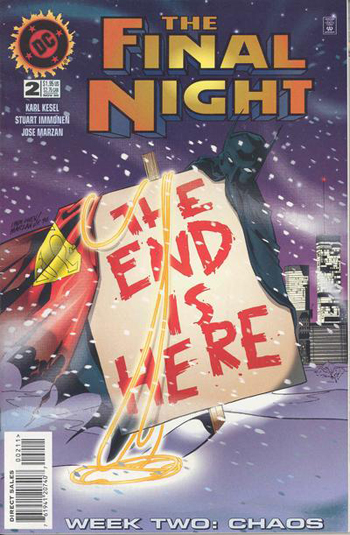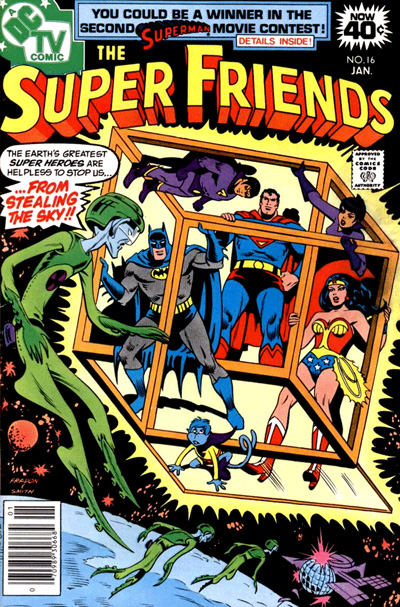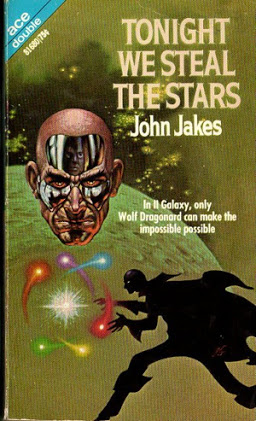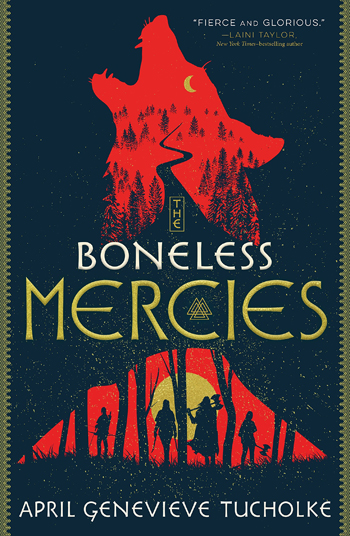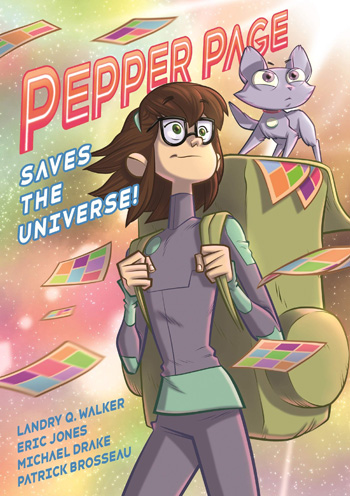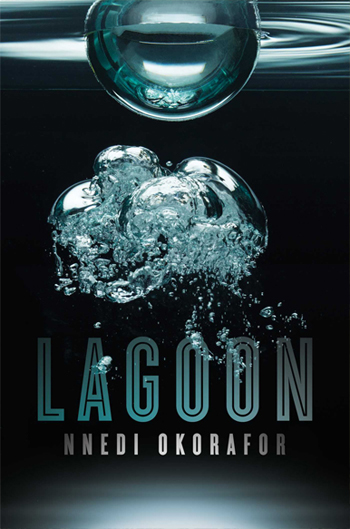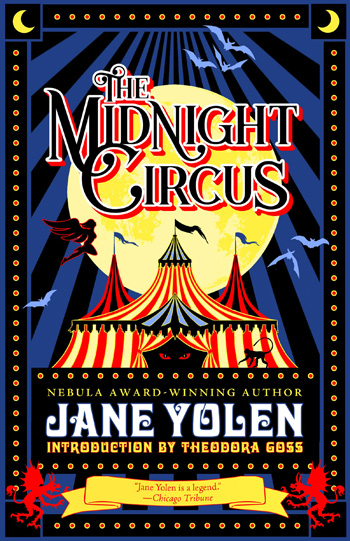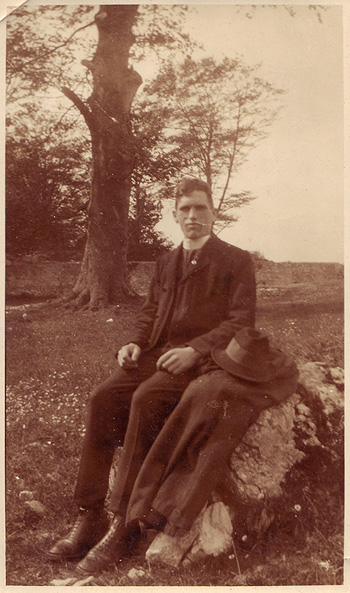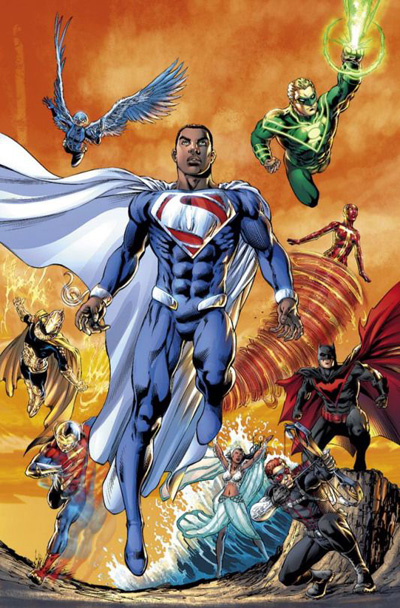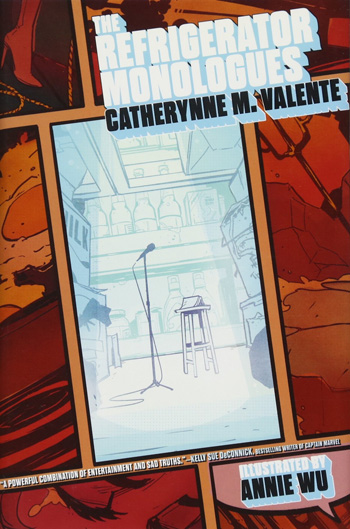I don’t know why it’s taken me so long to get around to reviewing this, ’cause it’s been something that’s really stuck with me ever since I read it. Let’s take a look at Lagoon by Nnedi Okorafor.
Okorafor published this Africanfuturist sci-fi novel back in 2014. The basic premise is: What if first contact between humans and aliens didn’t take place in a large, rich Western nation? What if it took place in Lagos, Nigeria?
Our lead characters are Adaora, a marine biologist whose husband’s religious devotion is pushing him into abusive rage; Agu, a soldier on the run after he attacked comrades attempting to rape a woman; and Anthony, best known to the world as Anthony Dey Craze, a hip hop superstar from Ghana. These three strangers find themselves on Lagos’ Bar Beach one night and end up getting startled by a tremendous sonic boom and then pulled out to sea by a strange wave.
And then a few minutes later, they get pushed back out of the ocean, accompanied by a woman who calls herself Ayodele. She looks perfectly normal — as long as you don’t look close enough to fall into the uncanny valley — but she’s not human. She’s not even biological. Ayodele is more like a collection of shapeshifting alien glass nanites, and her mission is to learn what she can about humanity, make friends, and decide what happens after that. So the four go to Adaora’s house, which she shares with Chris, her Christian fanatic husband, and her two children, so they can decide what to do.
It’s not long before word gets out. And all hell breaks loose in Lagos. While one bunch of goons decides to kidnap Ayodele, Chris’ church members, including the manipulative Father Oke, decide to hold an intervention to either convert her or kill her. And Anthony has announced an impromptu concert at Adaora’s house so they can tell everyone in the city about Ayodele and her people. And once a trigger-happy soldier shoots the alien, the biggest riot in the city’s history erupts.
Can the trio of humans escape the violence, convince Ayodele not to give up on or destroy humanity, retrieve Nigeria’s dying president, placate the monstrous human-eating highway that’s been roused to life by the chaos, discover the secrets that brought them together, and survive attacks by the ocean’s newly intelligent and upgraded sea life so they can meet with the aliens in person?
Verdict: Thumbs up. Okorafor is the American-born daughter of Nigerian parents, and she’s spent much of her life in Lagos. So she knows the city and the people there very well. She knows their strengths and their weaknesses, their nobility and less-than-nobility. She knows what makes the city succeed and what makes it fail. She brings all of this to this novel, giving us a strong but broad overview of life in Nigeria’s largest city.
And what we see is something very much unlike what we see in Western nations — except for all the ways it’s really, really similar. Yeah, it’s a different culture on a different continent. People think differently about life and death, gods and religion, money and jobs, law and crime, government, entertainment, poverty, and more. But it’s also been heavily influenced by the West. Nigeria isn’t Wakanda, an African paradise untouched by the decadent West — it’s a nation that’s grown up being told it should be more like the West, even while trying to hold on to the old traditions.
There’s also a lot of Nigerian slang and pidgin, which can be a little difficult. You can generally figure out the gist of what’s being talked about through context. However, Okorafor does provide a glossary of Nigerian language and slang in the back of the book, which I didn’t discover ’til I’d finished reading. So if you find yourself stumped, you can go check the glossary.
I often feel that Okorafor’s characters are a little touch-and-go — some of them are very strong, some feel more like they’re placeholders. In this novel, Adaora gets the most screen-time, but often feels like one of the least developed characters. Agu is pretty interesting and well-developed, but I most wished we could spend more time with Anthony, who felt like someone with a very interesting story to tell but no time to tell it — we barely even get to hear him rap, fer cry-eye. Ayodele is a mystery from beginning to end — we never learn much about her or the aliens, and often what she says once is contradicted by something else a few pages later.
But many of the best characters are less important ones. Chris and Father Oke are basically strawmen, but they do offer a look into the over-the-top evangelical mindset that seems to rule much of Christianity in Africa. Fisayo is a minor character with a fascinating backstory — office worker by day, prostitute by night, and with the coming of the aliens, a newborn proselytizer about the end of the world. A mute beggar boy gets a chapter of focus, just to make sure you really care about him before he runs into serious trouble.
Once the riots really get cooking, several chapters are devoted to individual Lagosians who witness the chaos and interact in some way with something strange or frightening, and these interludes are some of the best short character studies in the book.
And some of the most fun — and often most tragic — characters aren’t human or alien — namely, a furious and dangerously upgraded swordfish, a handicapped but admirably optimistic tarantula, and the most enlightened bat in the world.
And a few deities show up for the festivities, too, specifically Papa Legba, a god of languages and crossroads in a few different cultures, appears in more than one disguise, including a 419 scammer, and Udide Okwanka, an Igbo spider spirit who serves as a trickster, a master storyteller, and the bedrock of Lagos itself. Plus there’s the Bone Collector, a highway given monstrous life and an endless appetite for tasty humans.
And the biggest non-human characters in the book are the city of Lagos itself and the ocean — it’s the first place the aliens visit, the place where they offer the creatures there all the enhancements they can dream of, the place our heroes must travel through to speak with the aliens.
So is it worth reading? Heck, yeah. It’s a rapid-fire thrill ride through science fiction, fantasy, and a real city you’ve never heard of but probably won’t forget. There’s lots of action and excitement, short chapters so it’s easy to burn through, and a host of cool and weird characters, all wrapped around a crash course in a culture you’ve probably never experienced. Go check it out!

